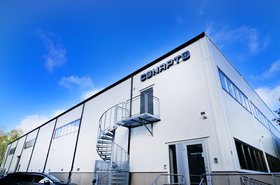In recent years, the market has been filled with messaging around "cloud first" and the idea that migrating as much as possible of your IT infrastructure to the cloud is the predominantly best way to go.
The reality, however, looks a bit different, where organizations need to be able to adjust their infrastructure to a variety of requirements from different stakeholders.
Enter: hybrid IT solutions.
It's time to dispel the myth that companies first and foremost must apply a strategy for moving everything to the cloud – and instead view it from an actual need-based perspective.
With many organizations having a legacy infrastructure and assets that have been built up over many years, the cloud journey needs to be adjusted accordingly.
Some applications are not tailored for cloud consumption at all, some have security concerns hindering cloud deployment and some applications have latency demands that makes them more suitable for Edge deployments in on-premises or private cloud colocation solutions.
Hybrid IT solutions – also referred to as hybrid cloud – combine the delivery of enterprise applications, data, and services to keep the business running and accelerate innovation. It encompasses people, processes and technology and spans across both on-premises and off-premises environments in a data center, private cloud, public cloud or around the Edge of the network.
In a hybrid IT environment, enterprises often blend Capex, Opex, as-a-service and pay-per-use consumption models. Consequently, a hybrid IT model enables organizations to lease a portion of their IT resources from a public or private cloud service provider.
This is an approach which empowers organizations by provisioning their IT resources from the cloud and gaining the cost effectiveness and flexibility offered by cloud vendors, while still having full control over specific resources that they might not want to expose to the cloud.
Hybrid IT can act as the gateway into new and emerging technologies by allowing companies to migrate systems at their own pace. And there are significant benefits to this approach.
Security, control, and data integrity
Maintaining control of data is extremely important. However, it tends to become a bit more challenging when the cloud is involved. You will still need to secure your applications, ensure your databases are encrypted and limit access.
This might feel like stating the obvious but in fact, some of these security practices are not activated by default in some cloud environments – meaning that administrators need to go into their cloud solutions and actively enable them.
Working with hybrid IT allows you to make informed decisions on which assets would benefit from being stored in the cloud and which wouldn’t. It also allows you to keep tabs on all your applications and the flow of data between cloud and on-premises resources.
Bridging legacy into the next generation
In some cases, the migration of legacy applications to the cloud is predicted to turn out so complex, difficult, and costly that the decision is made to leave them be.
It’s in situations like these when you may find that the application in question is still bringing you value, operating quickly and even supports your agile operations – and just because a cloud migration is possible doesn’t mean it’s beneficial.
In that scenario, it might be efficient to leave the application on-prem or in a colocation datacenter. However, hybrid IT allows you to be ready in case a rapidly evolving technology landscape forces you to move the asset – or a substituting one – to the cloud further down the line.
Efficiency, latency sensitivity and end-user productivity
We’ve learned that not everything belongs in the cloud. This is the main reason why technologies around the Edge and distributed computing are gaining traction.
A good hybrid IT strategy will take both the Edge, your data center, your colocation partner, and the cloud into consideration. And above all, it will allow you to ease into new concepts like Edge without having to implement all your workloads at once.
Compliance, governance, and risk mitigation
Hybrid IT models allow you to move data at your own pace, whether it's a legacy or modern asset. Geopolitical challenges, as well as geographical distribution of resources, can be challenging when working with a cloud-only model.
However, hybrid IT allows you to leverage from existing systems, even if they’re part of a legacy, alongside more modern solutions. So, unlike a hybrid cloud scenario, hybrid IT will enable you to leverage cloud-like services to continue to use your existing systems, while still planning for the future.
More from Contapto
-

How Microsoft and Vattenfall partnered for data centers that use 100 percent renewable energy, 24/7 - with Conapto set to follow
Vattenfall’s 24/7 matching solution enables data centers and power companies to precisely match production and consumption
-

5 Things Conapto taught us about Stockholm
Sweden: the elusive land of meatballs, Ikea and ABBA. But what makes it the perfect location for a data center?
-

Sponsored Conapto takes next step with new owners
The European infrastructure fund, Marguerite II, acquires the Swedish data center operator Conapto



